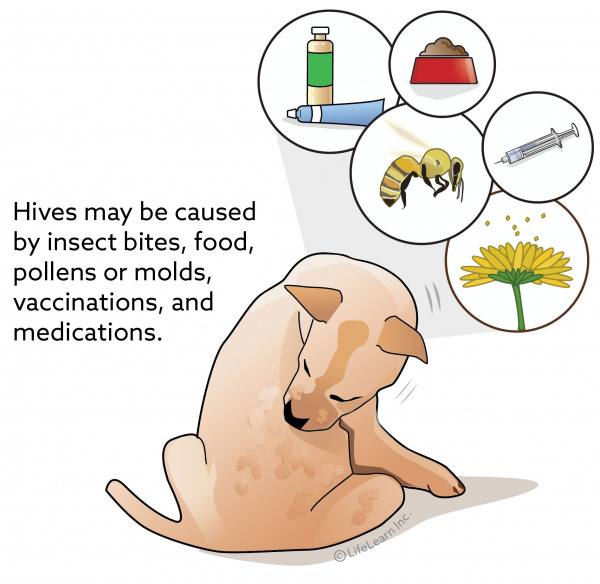
Treatment For Urticaria In Dogs. All medication used to treat hives in dogs should be professionally administered. In rare cases epinephrine may be required if the urticaria is associated with signs of anaphylaxis. However there may be historical cultural or anecdotal evidence linking their use to the treatment of Urticaria. For example you can apply an oatmeal paste to the affected area s.

The dogs reaction will typically disappear once the irritant is removed but in some cases the irritant cannot be eliminated. Doggy outerwear may reduce the exposure enough to stop the symptoms. In such cases it is possible that there is sensitization to a cross-reactive environmental allergen that permits the reaction or that non-IgE-mediated mast cell degranulation occurs but this has been poorly investigated. Adrenocorticosteroids may be prescribed for more serious cases to quickly alleviate inflammation and provide relief for cases with pruritis. The clinical signs resolved rapidly after treatment with prednisolone and antihistamine. Preventing Dust and Dust Mite Allergies in Dogs.
For example you can apply an oatmeal paste to the affected area s.
Sometimes Benadryl is administered to relieve symptoms. The doctor will prescribe antihistamines that are allowed for admission in infancy Fenistil Zyrtec Suprastin and their analogues. Medications like non-drowsy antihistamines are often used to reduce the severity of the itch. Dexamethasone given once usually results in resolution of clinical signs within 24 hours. Jeff Werber a well-known veterinarian as well as a medical journalist from California suggests pet owners administer about one milligram of Benadryl per pound of dog weight for home-based treatment of hives. Veterinarians often attempt to treat urticaria by eliminating contact with the symptom-inducing stimuli – in this case exposure to cold temperatures.